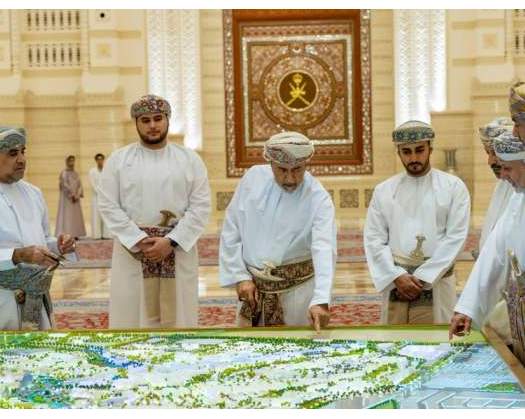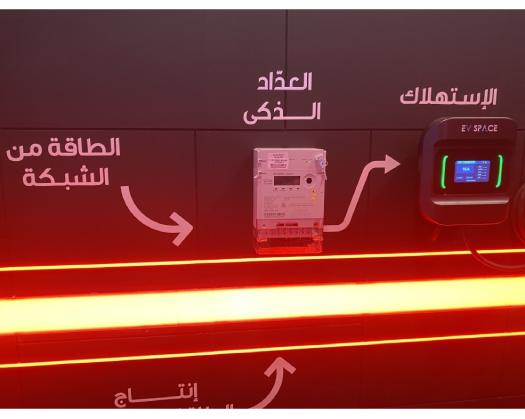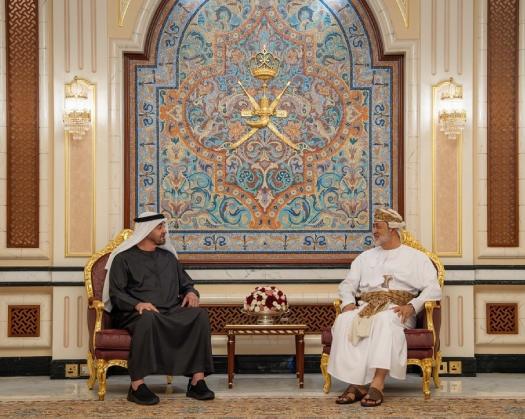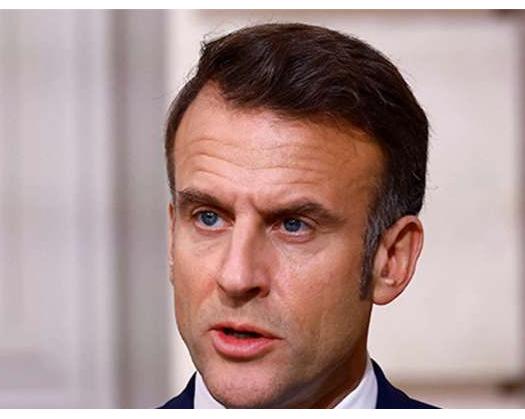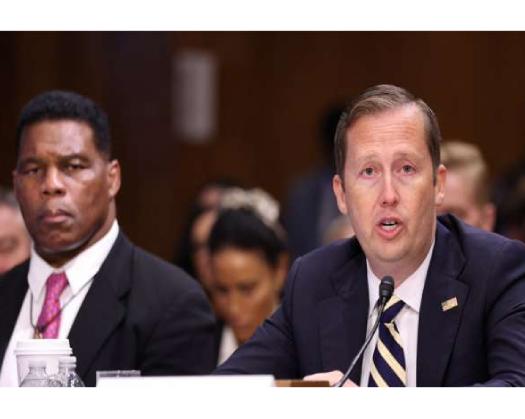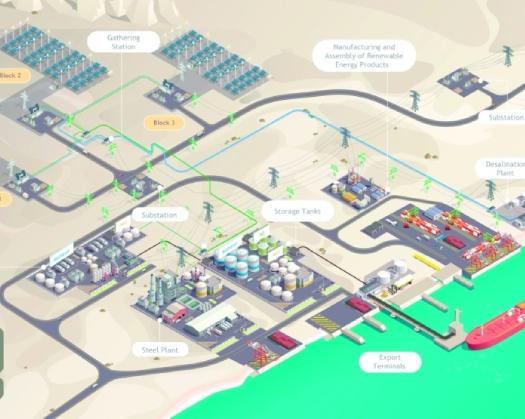Muscat: His Majesty Sultan Haitham bin Tarik's visionary approach to the development of the governorates in the Sultanate of Oman marks a significant advancement towards achieving holistic and sustainable economic and social progress. This initiative is underscored by the priority of "Developing Governorates and Sustainable Cities," which aims to empower the governorates to effectively utilize their resources.
In his Royal address during the first annual session of the eighth term of the Council of Oman in 2023, His Majesty emphasized the importance of governorate development: “Our focus on enhancing the governorates and strengthening the principle of decentralization has been realized through the establishment of the System of Governorates and the Law of Municipal Councils. This approach is in line with our vision for governance that is locally administered and rooted in decentralization. It also supports our goals of empowering local communities to manage their own affairs and engage actively in the nation-building process.”
Royal Decree No. 36/2022, which established the Governorates System, highlights the significance of local governance based on decentralization, facilitating the governorates in fulfilling their roles and driving development across various sectors in alignment with the objectives, pillars, and priorities of Oman Vision 2040.
Furthermore, the royal directives to double the financial allocations for the Governorates Development Programme from OMR10 million to OMR20 million for each governorate during the current five-year plan (2021-2025) are designed to support the implementation of strategic initiatives for the development of governorates and sustainable cities. This increase aims to enhance the competitive advantages of the governorates, serving as a fundamental driver for achieving comprehensive and sustainable development throughout the Sultanate of Oman.
The total investment in governorate development from 2021 to 2024 exceeded OMR 81 million, with approximately OMR 44 million earmarked for the current year, 2025. Key initiatives in this development include projects aimed at enhancing seafronts, paving internal roads, and developing and maintaining public parks. Notable projects that received recognition for their proposals include Ibri View in A’Dhahirah Governorate, the Grand Canyon in A’Dakhiliyah Governorate, and the Historical Center development in North Al Batinah Governorate.
Eng. Mohammed Saif Al Amri, Director General of Governorate Affairs, informed the Oman News Agency (ONA) that Royal Decree No. (36/2022), which established the System of the Governorates, promotes the intended administrative and economic decentralization of the governorates. This system has transformed the governorates into administratively and financially autonomous entities, empowering governors with the authority of unit heads.
He further noted that this initiative will strengthen the capacity of the governorates to enhance their economic and administrative functions, attract investment, and consolidate oversight under the Minister of Interior. This approach aims to standardize regulations governing municipal affairs across all governorates, facilitating a unified framework that streamlines procedures and aligns with a shared vision to achieve the desired objectives.
He articulated that the existing strategies for the development of the governorates in the Sultanate of Oman align with the national priorities outlined in Oman Vision 2040 and the National Spatial Strategy. These strategies encompass specific initiatives for the governorates, sectoral strategies from government institutions, strategic programs within the five-year plans, and national programs.
He emphasized that the evaluation of development project success across various governorates is carried out through regular opinion surveys assessing service satisfaction, annual reports detailing the governorates' contributions to economic enhancement, performance metrics related to Oman Vision 2040 objectives, the competitiveness index of the governorates, and annual updates on the advancement of development initiatives.
He further noted the availability of numerous educational and training programs aimed at bolstering local skills within the governorates. This includes the National Initiative for the Development of Local Administration, which is a collaborative effort between the Ministry of Interior and the Royal Academy of Management (RAM) for governors and walis. Additionally, there are programs designed to train and qualify members of municipal councils, opportunities for participation in regional and international conferences, training initiatives organized by the governorates, as well as workshops and labs conducted by both government and private sectors.
In a related statement, Sheikh Said Rashid Al Qatabi, Director General of Social Sectors at the Ministry of Economy, informed the Oman News Agency (ONA) that through Oman Vision 2040, the Sultanate of Oman aims to place greater emphasis on the governorates, granting them a degree of autonomy. This initiative is intended to motivate the governorates to actively participate in economic development.
The speaker emphasized that the 10th five-year plan placed significant emphasis on the priority of "Developing Governorates and Sustainable Cities." Strategic programs were established to ensure comprehensive and balanced development across the various governorates of the Sultanate of Oman, focusing on the optimal utilization of natural resources based on the unique advantages of each governorate.
He highlighted that the Royal commitment to governorate development was evident in the directives from His Majesty the Sultan, which initiated the Governorates Development Programme at the start of the 10th five-year plan. This included an allocation of RO 10 million for each governorate from 2021 to 2025. In early 2022, Royal orders were issued to double these allocations to RO 20 million.
He noted that the Royal vision aims to empower the governorates by allowing them to set their own priorities, enhance their economies, and leverage the comparative and competitive advantages inherent in each region. After four years of implementing this program, the foresight of His Majesty the Sultan is evident in the stimulation of economic activity, the promotion of tourism, the creation of job opportunities across various sectors, and the enhancement of local content, all contributing to increased societal satisfaction in the different governorates of the Sultanate of Oman.
He also mentioned that from 2021 to 2024, approximately 848 projects were executed across the various governorates. Additionally, numerous projects have been approved for the current five-year plan, following the methodology established by the Ministry of Economy for prioritizing developmental initiatives.
Dr. Rajab Ali Al Owaisi, a specialist in social and educational studies at the State Council, informed Oman News Agency that since His Majesty the Sultan’s Accession Day on January 11, 2020, a set of foundational priorities has been established for shaping the future of Oman. These priorities align with the Oman Vision 2040 framework, particularly emphasizing the development of governorates and sustainable cities.
He noted that the Sultanate of Oman’s initiative to implement decentralization within the governorates marks a significant strategic transition towards local governance. This approach empowers the governorates to explore development opportunities, foster self-reliance, and enhance community engagement in comprehensive national development efforts.
Furthermore, he highlighted that Royal Decree No. (36/2022), which established the System of the Governorates, represents a pivotal advancement in national governance. This decree serves as a crucial starting point for administrative development focused on quality, while also embracing the principle of decentralization in administrative functions. The new governorate system aligns with the vision's priorities and considers economic, social, and technological advancements, ensuring the integration of necessary human, material, and financial resources, as well as the capabilities required for effective administrative leadership.
Additionally, he explained that Royal Decree No. 38/2022, which amends certain provisions of the Municipal Councils Law in Article (21), clarifies the responsibilities of municipal councils within the governorates. This includes providing input on various aspects related to the utilization of the governorate’s resources, aimed at achieving sustainable development and creating job opportunities for citizens.
The ongoing initiatives within the governorates are advancing in alignment with the priorities set forth by His Majesty the Sultan. In his royal address during the inaugural annual meeting of the eighth term of the Council of Oman in 2023, he emphasized the importance of a gradual approach in our policies and decisions. He stated: “We are committed to continuously evaluating the expected outcomes of the decentralization policy for the governorates. Our resolve is to regularly reassess and expand this strategy, aiming to include various sectors and dimensions. This effort is dedicated to significantly improving and strengthening the active involvement of local communities in the development process, ensuring that the local administration initiative is pursued diligently to meet its objectives, thus contributing effectively to our overarching journey of economic and social development.”
The Ministry of Housing and Urban Planning has expressed its commitment to fostering an integrated and modern lifestyle that extends beyond Muscat Governorate to all governorates across the Sultanate of Oman. Following the completion of Sultan Haitham City, additional future cities are set to be launched in the current year (2025), with announcements to follow in due course.
Furthermore, the ministry highlighted that smart city projects are part of the National Spatial Strategy, which encompasses structural layouts, regional planning, and agricultural cities aimed at enhancing food security, transportation systems, and renewable energy initiatives.
The ministry indicated that its current and future strategies incorporate sustainable and balanced elements for urban planning and development, aimed at enhancing the quality of life for individuals and creating environments that are more humane, facilitating ease of movement and work. This strategy is grounded in the principle of advanced planning within Sultan Haitham City.
The ministry further elaborated that urban development plays a crucial role in generating new economic opportunities that empower citizens. Initiatives related to smart cities are designed to offer improved housing solutions that fulfill the basic needs of residents while promoting well-being and sustainability. Additionally, these projects aim to develop intelligent solutions to address and adapt to the impacts of climate change, thereby mitigating natural hazards.
It emphasized the high demand for property ownership in these cities and integrated residential neighborhood plans, noting that some residential developments have completely sold out.
The Oman Vision 2040 Implementation Follow-up Unit highlighted that the development of governorates and sustainable cities is a key pillar of Oman Vision 2040. This initiative aims to achieve comprehensive and balanced development across all governorates in the Sultanate of Oman and receives Royal attention, underscoring the importance of enhancing integration between the central government, governorates, and local development efforts.
The unit also mentioned that this initiative seeks to empower governorates to effectively utilize their natural and human resources, with an emphasis on attracting both local and international investments. It aims to stimulate productive sectors that create job opportunities and foster economic growth, while also focusing on the development of infrastructure and public services to improve citizens' quality of life, taking into account the unique environmental and social characteristics of each governorate.
In line with the Royal commitment to improve the governorates, the Royal Decree establishing the System of the Governorates aims to advance a contemporary model of decentralized local governance. This initiative aligns with the objectives of Oman Vision 2040, which emphasizes sustainable development across the governorates, fosters an appealing investment climate, optimizes resource utilization, and enhances local and municipal services.
The unit has initiated various programs designed to cultivate economic leadership within the governorates, including those offered by the Royal Academy of Management (RAM) as part of the National Initiative for the Development of Local Administration. These programs target various levels of governance, including governors, walis, and other national entities engaged in local administration. Strengthening local governance capabilities is crucial for promoting administrative decentralization and achieving sustainable development.
The Oman Vision 2040 Implementation Follow-up Unit, through its outreach initiative known as "All Oman," has been visiting the governorates to emphasize comparative advantages, competitiveness, and community empowerment. This effort aims to foster a culture of continuous improvement and streamline processes among government employees in the governorates. Recently, visits to seven governorates were conducted, featuring training workshops and discussions with youth to enhance their involvement.
Al Tayeb City, located in the Wilayat of Liwa in the North Al Batinah Governorate, serves as a comprehensive model for sustainable urban development in Oman. Spanning approximately 12 million square meters and situated near the Al Batinah Expressway, the city is designed to accommodate around 30,000 residents and offers a full range of public services and amenities. It currently features 1,300 residential units, with plans to expand to 3,400 units, ultimately supporting a population of approximately 50,000 residents and visitors in the future.

